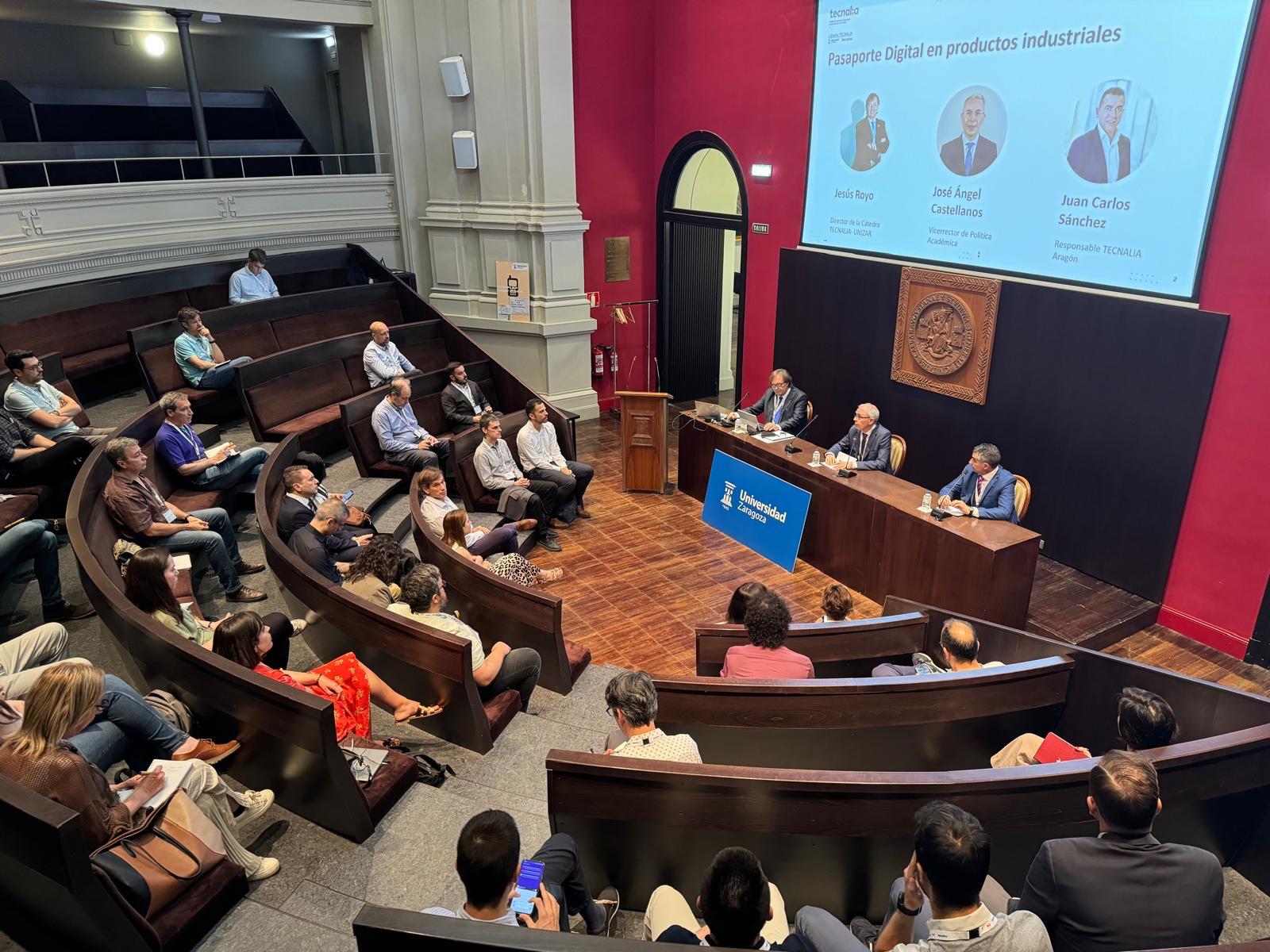“The Digital Product Passport was created to store, record and hold information throughout the useful life of products”
The Digital Product Passport is designed to store, record and hold information throughout the useful life of the products
The TECNALIA Chair held an event at the Paraninfo building of the University of Zaragoza aimed at both the university community and the scientific-technical and business community. The aim of this meeting was to discuss the main pillars of the generation and implementation of the DPP, thus contributing to the dissemination and transfer of knowledge around innovation, technology and sustainability issues.
The information and data obtained from a product’s digital passport is used for the manufacturing and maintenance processes of any product. It is designed to store, record and hold information throughout the lifetime of that product. This provides greater traceability in order to be able to consider what its useful life is; if it is going to last over time or going to have to be repaired.
During the Digital Passport event, it was possible to explore the following:
- How digital technology can help efficient passport management, integrating it seamlessly into day-to-day operations.
- Specific examples of DPP implementation trials were shared, along with valuable lessons learnt in the process.
- Key issues such as sustainability and corporate social responsibility were addressed, highlighting how this passport can be a tool to improve your company’s reputation and comply with European regulations.
Who is going to use the Digital Passport?
The information is intended for the end user; a customer who buys an electric car, for example, and wants to know what is going to happen to its batteries. This information will allow us to know the useful life of a product, of the materials it is made of, and will help us to better work on the concept of circular economy.
The DPP will also be used by the stakeholders involved in the product design and manufacture.

